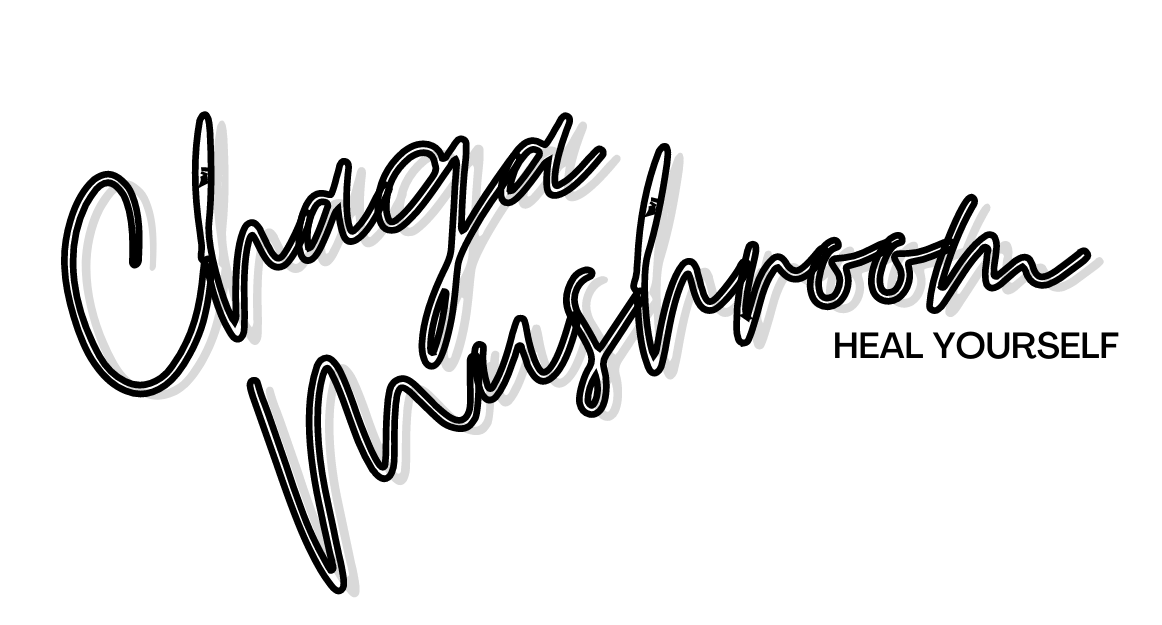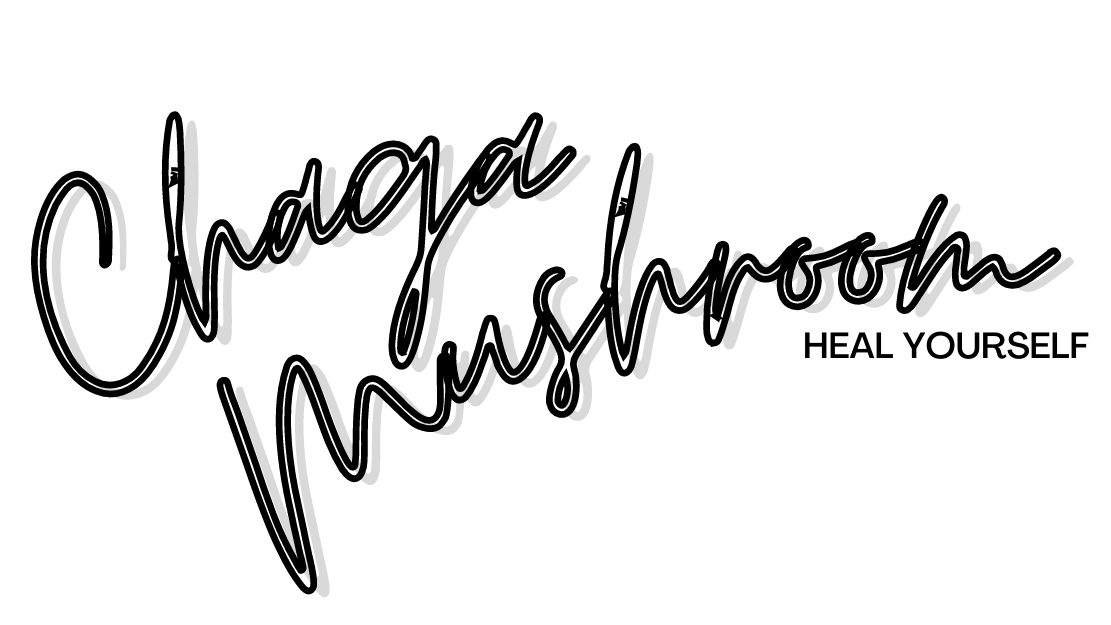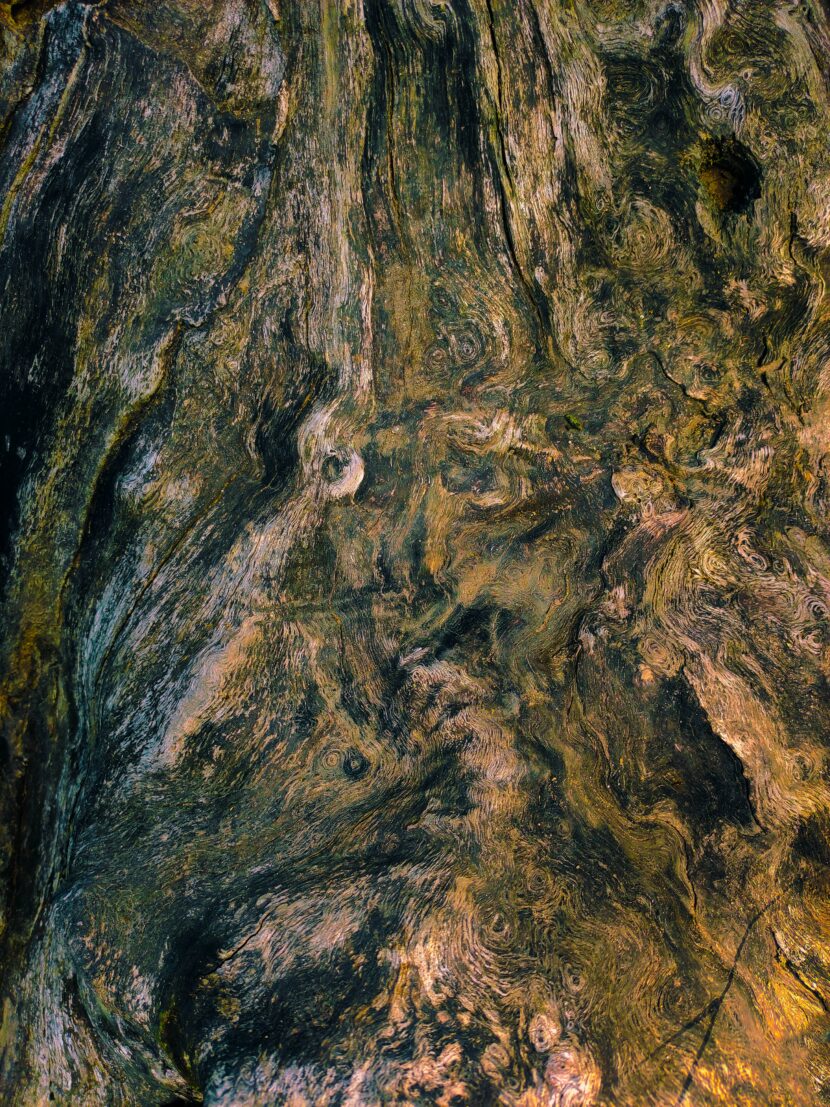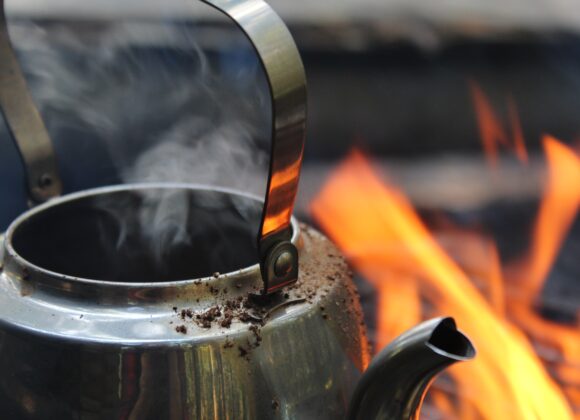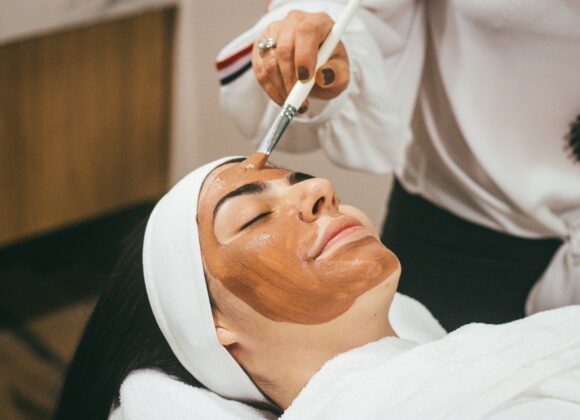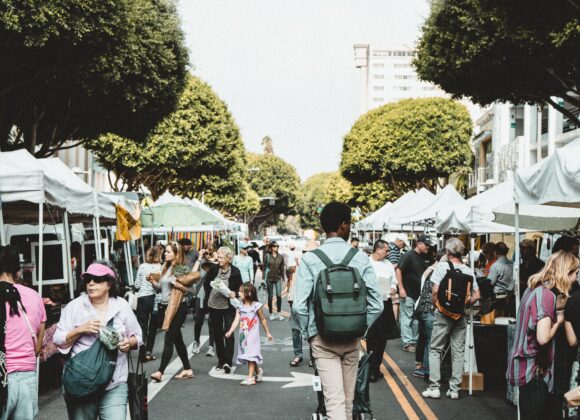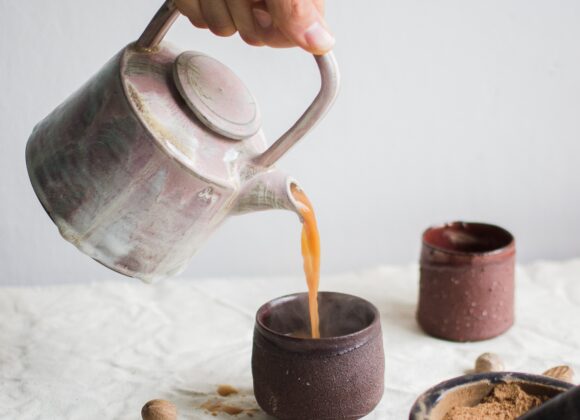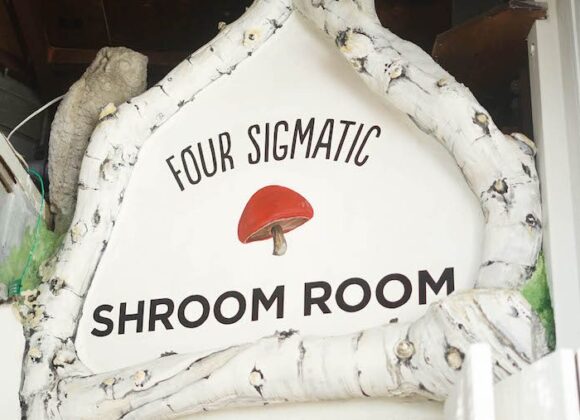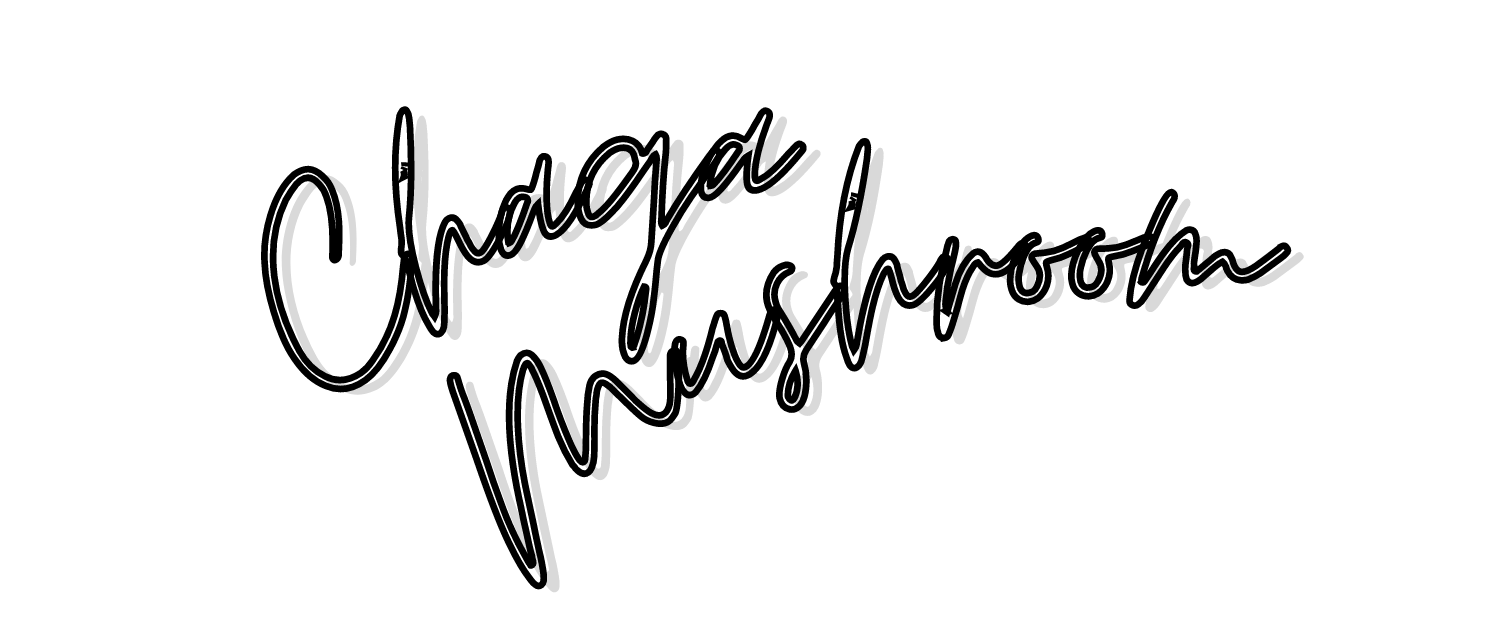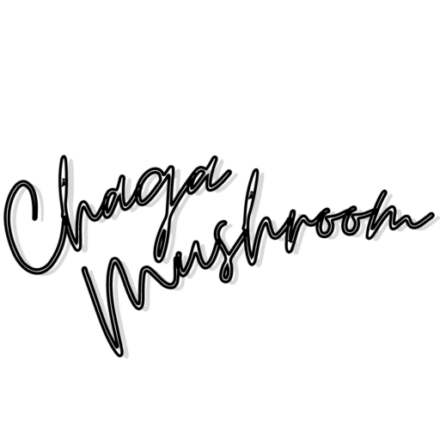How does Chaga grow?
‘What trees does Chaga grow on?’ Unlike many other fungi, Chaga starts growing from inside the tree instead of developing on the surface of the tree. As it matures, it protrudes from the tree. The exterior of Chaga is very dark, almost black, and looks like something burnt. The inside of Chaga is a rich orange/brown color with a corky texture.
Chaga grows on living trees, but it is parasitic. This means that the fungal mycelium enters the stem of a mature tree through a fracture or a wound in the bark and starts to absorb/synthesize healthy compounds. Antioxidants and Betulinic acid are two properties found in birch that give Chaga its potent benefits. The fungus will continuously eat the flesh of the tree as it softens or weakens until it reaches its decaying state, called ‘trunk fracture.’ The fungi eventually deteriorate the tree inside and out. You’ll know a tree is ‘infected’ with Chaga if the conk is visibly noticed breaking the surface of the tree. The conk thrives if it sticks out from the side of the tree.
What trees does Chaga grow on?
Many Chaga mushrooms are found in regions like Finland (where Chaga is called Pakuri), Estonia, Russia, Kazakhstan, South Korea, Belarus, Canada, Scotland, and North America as other Eastern and Northern European countries.
These Mushrooms grow best on the outside of yellow and white birch trees. But there are cases of Chaga being thought to grow on trees like oak, cherry, beech, alder, and poplar. Studies have not been done to investigate the contents of Chaga from these trees. However, we can assume that because many of the beneficial compounds found in Chaga are unique to birch trees, harvesting them from other species will not have the same health benefits.
Chaga is abundant in the northern hemisphere, with a higher forest altitude than the northern deciduous forests. This species of fungi thrives in cold, damp conditions and has an excellent tolerance for surviving brutal winters.
Does Chaga grow on Cherry trees?
Chaga is often mistaken for growth on other trees. Cherry, at times, can be mistaken for birch – and cankers that develop on cherry are often mistaken for Chaga. Nonetheless, according to Fungi Magazine, Chaga does not grow on cherry trees.
Does Chaga grow on Poplar?
Poplars or Aspens are other trees that are repeatedly mistaken for birch. Their white bark is easy to spot, and dark black cankers can look very similar to Chaga. With a closer look, you’ll easily differentiate its fungal growth or trauma from the Chaga mushroom.
Burls VS Chaga
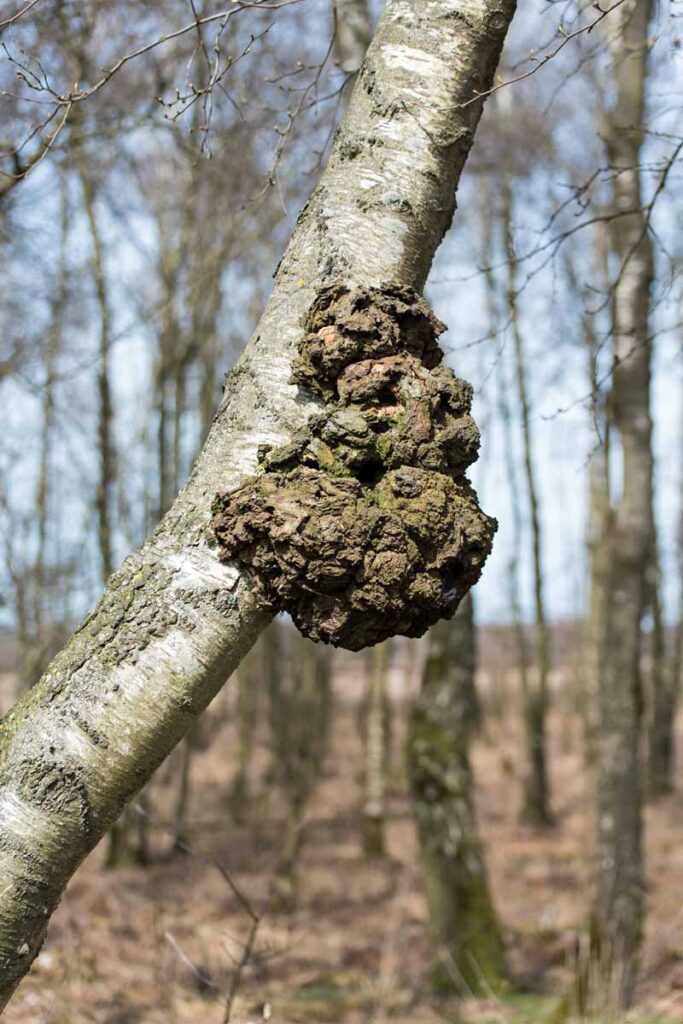
A Burl is a growth on the bark of a tree that is part of the tree itself. Burls on hardwoods (other than birch) can appear similar to Chaga, but luckily there are distinct differences. The first that sticks out is the burnt look of Chaga. The outer crust of the growth of Chaga will be very dark, resembling a burnt object, and therefore be different from the color of the tree.
A burl will be closer to the original color of the bark, maybe just a little bit darker. When removed, a burl will be close to the color on the inside as on the surface. Chaga will be a distinct orange and brown color and have a slightly different (cork-like) texture than the tree and the crust of the Chaga.
ONE OF A KIND
As it turns out, Chaga truly is unique and rare. It’s found in specific habitats, nearly exclusively on birch trees. The special relationship Chaga has with birch makes it so beneficial and health-improving.
